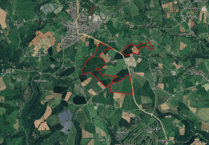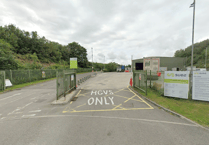CORNWALL’S second-largest and best-preserved Iron Age fort has been protected for future generations by an independent Cornish charity.
Cornwall Heritage Trust has taken ownership of Warbstow Bury – an important historic monument which sits on a prominent upland ridge at the heads of two tributaries of the River Ottery in northeast Cornwall. It is thought to have been constructed around 2500 years ago and is a Scheduled Monument.
The site has been transferred to the charity having previously been owned by Cornwall Council.
Founded in 1985, the trust protects historic places across Cornwall, which are all free for the general public to visit. It hosts a wide-reaching programme of wellbeing, education and community workshops, activities and events at these heritage sites and provides grants enabling visits to museums and historic monuments across Cornwall.
Cathy Woolcock, Cornwall Heritage Trust CEO has said the organisation is ‘incredibly proud’ to have taken over the ownership and plans to work with the community as much as possible.
She said: “Warbstow Bury is a fascinating place and such an important asset for the local community, so we’re incredibly proud to now be looking after it. Our charity has been protecting historic landscapes and monuments like this for the last 40 years, and has a strong track record of giving these special places the archaeological and land management expertise they need to flourish. We’re excited to get started and keen to work with the community as much as possible.”
The purpose of hillforts is much debated by archaeologists. It is thought that many were likely defensive; however, some may have had more ceremonial or ritualistic uses.
There is an archaeological feature at the centre of the hillfort known as the “Giant’s Grave” or, sometimes, “King Arthur’s Grave”. It is a large pillow mound – an artificial earthen mound used for keeping rabbits – which was likely constructed in the medieval period for the owners of the nearby Fentrigan Manor.
During the Second World War, two sentry boxes were built in the inner rampart of the fort, allowing Warbstow Home Guard to monitor the surrounding landscape for enemy aircraft.
Cllr Loic Rich, cabinet member for environment and climate change at Cornwall Council, said: “The transfer of Warbstow Bury to Cornwall Heritage Trust marks an exciting milestone and the beginning of a wider programme to pass the stewardship of some of Cornwall’s most significant heritage sites to the trust.
“We welcome the development of this important partnership, which will help secure the future care and management of these special places by a dedicated local organisation. Warbstow Bury, as one of the largest and best-preserved hillforts in Cornwall, will now be safeguarded for future generations through this new custodianship."
On top of this, four further transfers of historic sites to the charity from Cornwall Council are planned to take place over the next 12 months. They are East Pentire Head, Minions Heritage Centre, the Prince of Wales Engine House and Castle an Dinas (Penwith).





Comments
This article has no comments yet. Be the first to leave a comment.